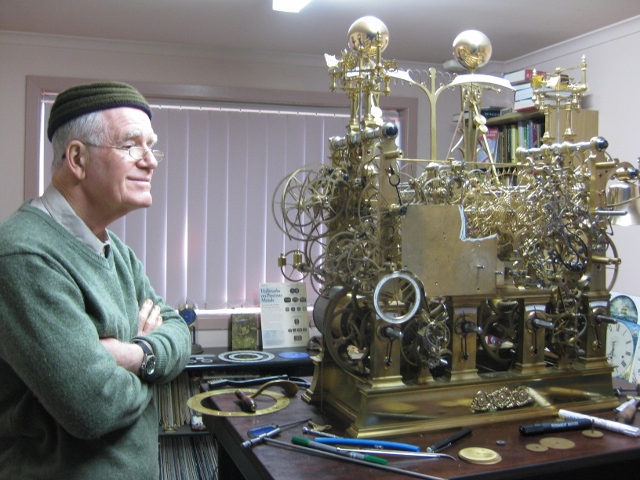On the weekend I attended a meeting on the theme 'Made in Australia' organised by the Australian chapters of the National Association of Watch and Clock Collectors.
It was in Goulburn NSW and I can recommend visits to the Railway Museum there, and the Waterworks with its steam engines. Australia was never a major manufacturer of clocks or watches, but I learned that Westclox manufactured alarm clocks in Melbourne, and Trent Firth made a presentation about the J.W Handley watch case factory in Abbotsford, Melbourne. When built, it was said to be the 'largest watch case factory in the world', and protected by substantial tarifs on imports, it made 5-8 million cases. During WW2, they made prismatic compasses, and later fishing reels and bowls measures. Andrew Markerink examined the work of two makers from the early nineteenth century, James Oatley and Francis Abbott. But some of the highlights of the meeting were opportunities to see the work of modern Australian clockmakers. Martin Foster talked about the work of a Sydney group to build an improved version of Philip Woodward's W5 super-accurate double pendulum clock described in his book 'My Own Right Time'. Will Matthyson builds wooden clocks with tensator (look it up) springs, which are gorgeous kinetic scuptures, and Norm Banham, formerly from Mt Stromlo, is the only person in the world to have constructed replicas of all four of John Harrison's famous 'sea clocks'. Two, H1 and H3, were on show, along with many other beautiful pieces of handcraft from a number of attendees.
But finally, on the way home, I had a chance to call in to Buchanan's in Moss Vale. At the back of a general engineering and plastics factory one of the most complex mechanical clocks ever envisioned is being constructed for an American collector, Mark Frank. It takes off from Harrison's H1 and adds every possible complication, no whistles but certainly bells, and astronomical dials, &c, &c and then skeletonises it so every moving part can be seen through other moving parts.
Just awesome.
.jpg)